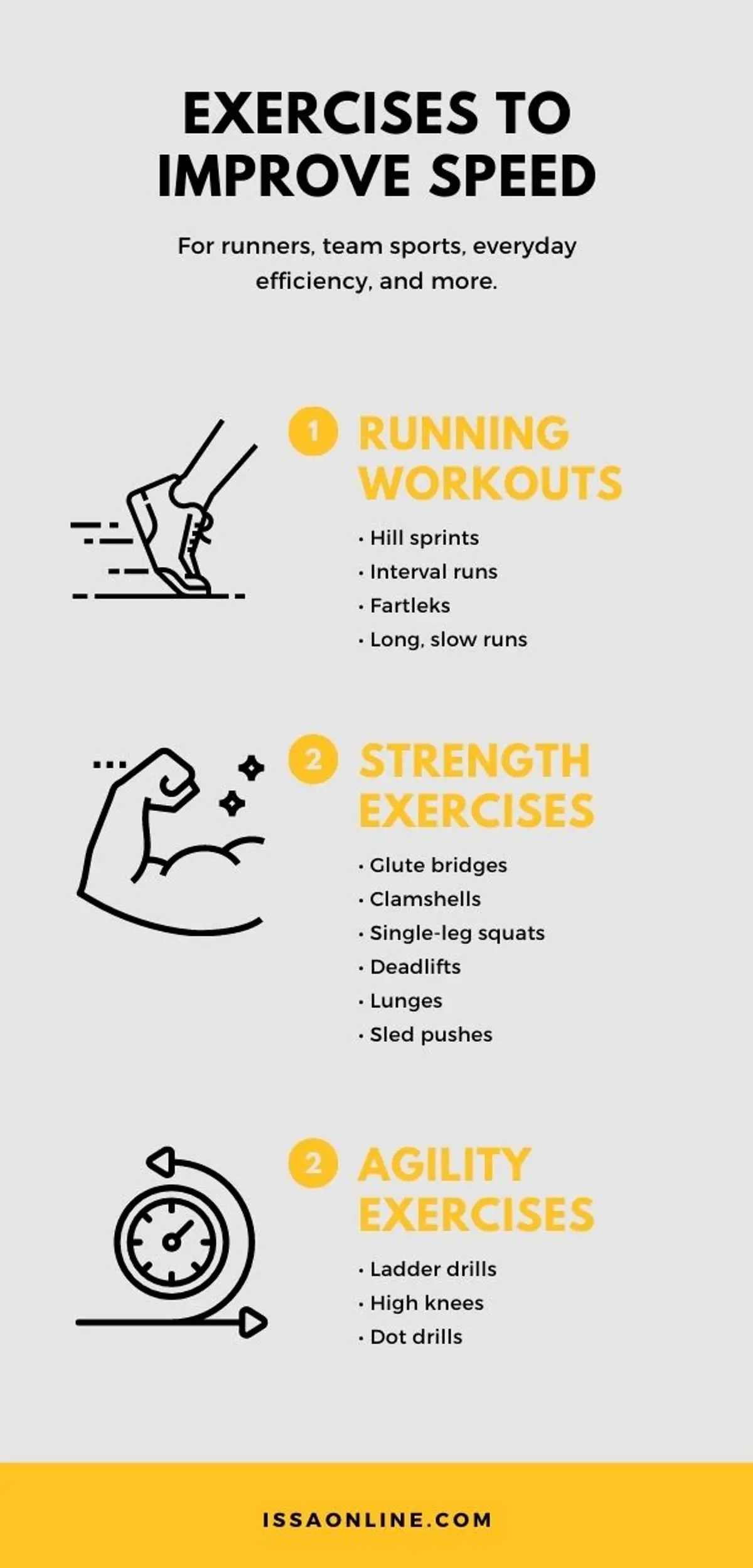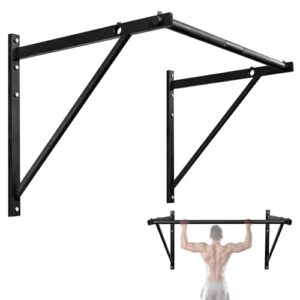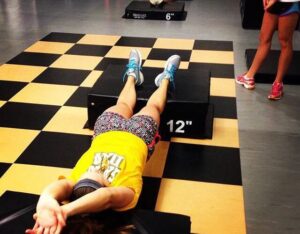A strength training plan for runners enhances endurance and speed. It targets key muscle groups for optimal running performance.
Crafting a strength training regimen for runners is essential for improving both stamina and pace. Such a plan strategically focuses on fortifying muscles that propel runners forward while also bolstering their overall stability and resilience to injuries. This type of cross-training complements regular running routines and can significantly elevate a runner’s ability to perform over various distances.
It involves a mix of weightlifting, bodyweight exercises, and plyometric drills, tailored to fortify the legs, core, and upper body. Implementing strength exercises two to three times a week can yield noticeable results, helping runners to maintain form, increase stride efficiency and reduce the risk of common running-related injuries. A balanced strength training plan is a crucial element for any runner’s toolkit, whether they’re a sprinter or a marathon enthusiast.
Balancing Speed And Power
Every runner knows the thrill of speed and the enduring force of power. To tap into the full potential of your running performance, a well-rounded strength training plan becomes a non-negotiable part of your routine. The interplay of speed and power not only improves your personal records but also fortifies your body against injury. Let’s look at how to balance these two critical components in your training.
Running Vs. Strength Training
Running boosts cardiovascular health and enhances stamina. It’s the heart of a runner’s regime. Strength training, on the other hand, builds muscle, increases power, and supports joint health. Together, they are an unbeatable force. Runners must blend both to scale new heights in their athletic performance. Here’s how they compare:
| Running | Strength Training |
|---|---|
| Enhances endurance | Builds muscle mass |
| Improves speed | Increases power |
| Burns calories | Strengthens bones |
Creating A Synergistic Routine
To create a strength training plan that complements running, integrate two to three strength sessions each week. Focus on core, legs, and upper body. These exercises should build not just muscle, but also explosive power useful on the track. Consider the following steps:
- Start with core exercises for stability.
- Add leg workouts like squats and lunges.
- Incorporate plyometric exercises for explosiveness.
- Use free weights for upper body strength.
- Ensure one full rest day between strength sessions.
Remember, timing is everything. Schedule strength sessions on easy run days or after a run. This strategy helps maintain quality runs and prevents overtraining. The ultimate goal is a harmonious relationship between running and strength workouts.
With the proper mix, you’ll witness improved run times and a robust running form. A synergistic routine is your pathway to becoming an all-around athletic powerhouse.
Anatomy Of A Runner
The Anatomy of a Runner is a fascinating look into the human body. Runners rely on a complex system to perform. Let’s explore what keeps them moving forward, stride after stride.
Muscles In Motion
Understanding the muscles in action is key to enhancing performance.
- Quadriceps: These power your knee extension.
- Hamstrings: They work with quadriceps for balance and speed.
- Calves: These push you on every step you take.
- Glutes: They provide stability and power.
- Hip flexors: These help lift your knees.
By training these muscles, runners can boost their strength and efficiency.
Impact On Joints And Tendons
Rigorous training can stress a runner’s joints and tendons. An effective strength training plan must address this.
| Joint/Tendon | Role | Common Issues |
|---|---|---|
| Knees | Absorb shock each stride | Runner’s knee, IT band syndrome |
| Ankles | Stability and movement | Sprains, Achilles tendinitis |
| Hips | Support body’s weight | Bursitis, labral tears |
Strength training helps build joint resilience and reduces the risk of injury. Protecting these areas is crucial for a runner’s longevity.
The Foundation: Core Strength
Runners often overlook the power of a strong core. Yet, this foundation offers stability and efficiency during runs. A robust core minimizes wobbling. It keeps runners upright even when fatigue sets in. Core strength also reduces the risk of injuries. This can lead to better running performance.
Key Core Exercises
Developing core strength involves targeted exercises. Focus on those that engage multiple muscle groups. These exercises are essential for building a solid running foundation:
- Planks – they fortify the entire core.
- Side planks – these target obliques.
- Dead bugs – for deep core engagement.
- Bicycle crunches – they work on core and hip flexors.
- Bridge pose – strengthens the lower back and glutes.
Stability And Endurance
A strong core leads to better stability and endurance. Stable runners maintain form for longer distances. This prevents energy waste. A blend of exercises can enhance these attributes. Aim to incorporate core workouts into your routine two to three times per week. Start with short durations. Gradually increase as your core gets stronger. Such progression ensures consistent gains in strength and endurance. Here are a couple of exercises to consider:
- Bird-Dog – enhances balance and core control.
- Russian Twists – improve rotational strength important for running.

Credit: www.issaonline.com
Lower Body Lifts For Faster Strides
Lower Body Lifts for Faster Strides turn runners into speed machines. Strong legs mean more force on the ground. More force equals faster starts and powerful sprints. Every step counts, and strength training makes each one explosive. This section dives into workouts that build leg strength, paving the way for quicker strides.
Essential Leg Workouts
Leg strength forms the foundation of a runner’s performance. Consider these key exercises:
- Squats: They build quads, hamstrings, and glutes.
- Deadlifts: These target your posterior chain, improving balance.
- Lunges: Step forward and boost leg muscle endurance.
- Leg Press: Focus on lower body without straining the back.
Consistency and proper form ensure gains and reduce injury risks.
Plyometrics For Explosive Power
Plyometrics ignite speed with dynamic movement. These exercises enable runners to power through the last stretch with resilience.
- Box Jumps: Propel from the ground onto a box, building thrust.
- Skater Hops: Side-to-side leaps develop lateral power and balance.
- Jump Squats: Add a vertical lift to traditional squats for agility.
- Burpees: Blend squats, jumps, and planks for full-body activation.
Blend these drills into your routine twice a week. Notice strides turning quicker and more efficient.
Upper Body: The Unsung Hero
Runners often overlook their upper body. But it plays a key role in running performance. A strong upper body helps maintain form when fatigue sets in. It balances the body. It can even make you more efficient. Let’s dive into the upper body’s role in your running regimen.
Arm Swing Importance
Arm movement can propel runners forward. It keeps the pace and conserves energy. Proper arm swing works in sync with your legs. This results in better balance and pace. It’s essential for power during a sprint finish.
- Match arm swing with stride – They should be in a natural rhythm.
- Keep elbows bent – Aim for a 90-degree angle for efficiency.
- Swing from shoulders – Your arms should move from the shoulders, not the elbows.
- Relax your hands – Clenching fists can waste energy and cause tension.
Chest And Back Strengthening Moves
Building a powerful chest and back boosts running. It improves posture and lung capacity. Learn some effective moves for these muscle groups.
| Exercise | Benefits |
|---|---|
| Push-ups | Builds chest and shoulder strength. |
| Pull-ups | Strengthens the upper back and grip. |
| Dumbbell Row | Targets the muscles in your back and arms. |
| Bench Press | Improves chest, shoulder, and arm power. |
- Start with lighter weights. Focus on form.
- Increase weight gradually to avoid injury.
- Pair with bodyweight exercises for balance.
Incorporate these upper body workouts into your strength plan. Notice how your running form and endurance improve. Remember, every muscle worked can contribute to a better run.
:max_bytes(150000):strip_icc()/effective-30-minute-running-workouts-2911891-0927-70272e09ac83449cadb9f1ce51656c0c.jpg)
Credit: www.verywellfit.com
Integrating Strength Into Your Running Regimen
Runners often focus on clocking miles, but a tailored strength training plan can propel performance. Adding muscle power enhances endurance and speed. It also lessens the risk of injuries. Let’s explore how to weave strength exercises into a running schedule seamlessly.
Periodization Strategies
Periodizing your training breaks it into cycles. Each phase targets specific fitness components. This approach keeps workouts fresh and effective.
- Base Phase: Focus on building an aerobic foundation and strength endurance.
- Build Phase: Introduce more intense strength workouts, pairing with speed work.
- Peak Phase: Aim for highest intensity, combining power and plyometric training.
- Taper: Reduce intensity, allowing the body to recover before race day.
Align strength workouts with these cycles. It helps runners peak at the right time.
Recovery And Injury Prevention
Strength training aids in recovering muscles and prevents injuries. It improves muscle balance and joint stability. To optimize recovery and prevent injuries, consider these tips:
| Tip | Description |
|---|---|
| Rest Days | Include days for complete rest or light activities like stretching or yoga. |
| Proper Technique | Always prioritize correct form over lifting heavier weight. |
| Post-Workout Care | Use foam rolling and massage to enhance muscle recovery. |
| Listen to Your Body | If pain or discomfort appears, don’t ignore it. Adjust workouts as needed. |
Regular rest and good technique are vital for sustainable strength training in your running plan.

Credit: www.issaonline.com
Frequently Asked Questions On Strength Training Plan For Runners
How Many Days A Week Should A Runner Strength Train?
Runners should strength train 2-3 days per week. This helps improve performance and reduce injury risk. Keep workouts balanced and targeted.
What Strength Training Should I Do For Running?
Incorporate squats, lunges, leg presses, and deadlifts for lower body strength. Add core exercises like planks and Russian twists. Focus on low reps with higher weights.
What Type Of Lifting Is Best For Runners?
Strength training with a focus on compound movements, like squats and deadlifts, is best for runners. These exercises enhance endurance and power, crucial for improved running performance.
What Is Periodization Of Strength Training For Runners?
Periodization of strength training for runners is structuring workouts in phases to maximize performance and reduce injury risk. This approach cycles through endurance, strength, and power-focused training periods, optimizing athletic progression and recovery.
What Is Strength Training For Runners?
Strength training refers to exercises focused on improving muscle strength, power, and endurance, specifically beneficial for runners to enhance performance and prevent injuries.
Why Should Runners Do Weightlifting?
Including weightlifting in a runner’s routine builds muscular strength and supports joint health, which can lead to improved running economy and reduced injury risk.
Conclusion
Embrace the power of strength training to transform your running experience. By consistently engaging in the exercises we’ve discussed, you’ll build endurance and reduce injury risk. Remember, every stride is bolstered by stronger muscles. Start today and witness the remarkable impact on your next run!
















